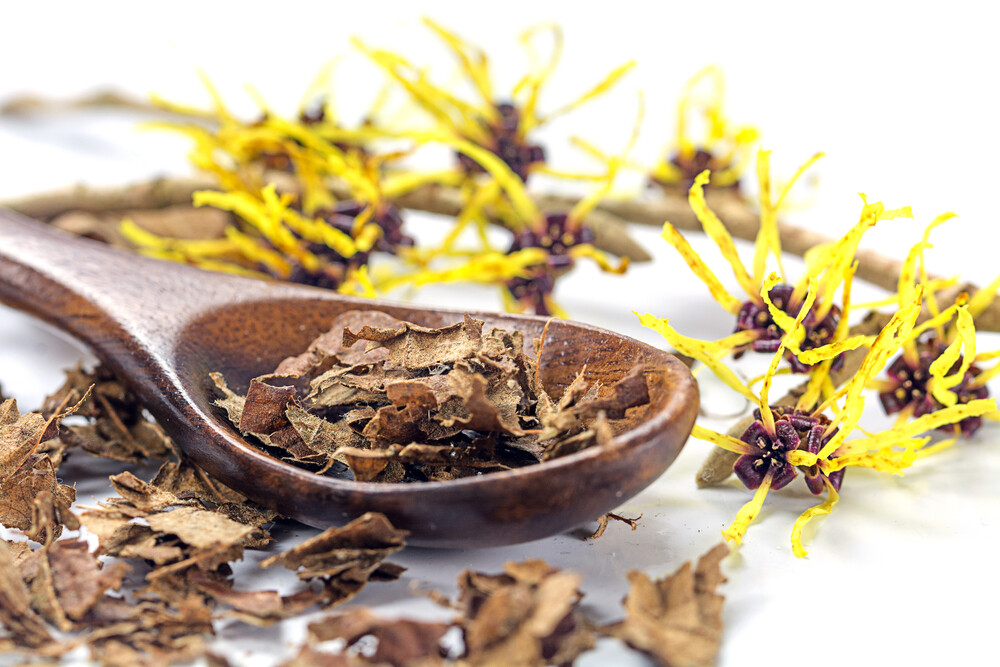Witch hazel (hamamelis) is found in toners, creams and lotions. For good reason! Why? You can find out here!
Some people have probably read the term on their face cream: witch hazel. What exactly it is and how it helps your skin, we’ll reveal here.
What is witch hazel?
Hamamelis virginiana is a shrub that grows in eastern North America. And it has a special feature: the witch hazel (also known as Virginian witch hazel), which is known in Germany by its name, forms its fruit even before it flowers.
Witch hazel – Uses and effects
The witch hazel has long been known as a medicinal plant and classified as a medicinal product. Among the most important ingredients are the tanning agents it contains, which are decisive for wound healing as they have astringent and anti-inflammatory effects.
The leaves and bark of the shrub are processed and used in ointments, creams and suppositories. A distillate is also obtained from them (witch hazel water). Cut or powdered leaves and bark are also used to prepare an infusion. Clinical studies show that witch hazel helps with burning, itching, problems with haemorrhoids, minor skin injuries, skin inflammations, as well as mild inflammation of the oral mucosa and eye complaints.
Witch hazel in cosmetics
As you can see, this plant has a lot to offer – no wonder that witch hazel is found in face creams, tonics and also in aftershave lotions. Because of its positive properties, witch hazel soothes itching, helps dry skin and retains its moisture. Added to facial toners, it is said to help refine the pores. It also relieves symptoms of neurodermatitis (atopic dermatitis).
Envelopes containing witch hazel can help with minor skin injuries, eczema and sunburn. You will need five to ten grams of cut leaves or bark, which you pour over 250 ml of boiling water. Leave to infuse for ten minutes. Soak a cloth in it and place it on the affected area.

